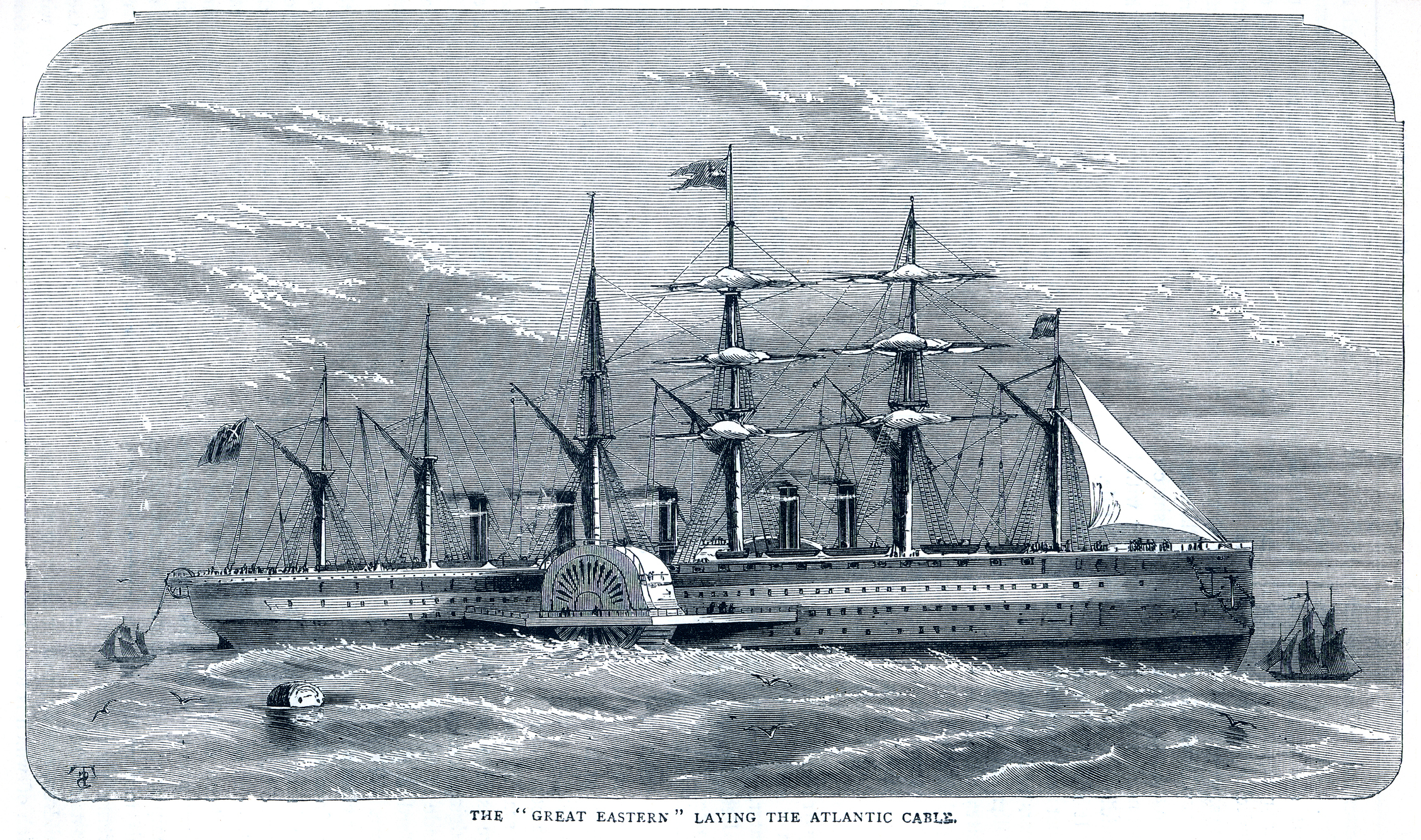Our Amazing History: Great Eastern

On the morning of August 27, 1862, the keeper of the Montauk Lighthouse, Joseph Stanton, walked outside onto the front lawn to greet the day and saw, just offshore, a monstrous seagoing steamship more than six times the size of any he had ever seen before. It had a double-skinned iron hull, two paddle wheels – one on the starboard side, the other on the port — six masts with furled sails and, between the masts, five smokestacks belching black smoke. The smoke meant it was trying to get underway but the ship was now listing 10 degrees to the starboard. More than 1,500 passengers were on board.
This monstrosity had been caught on an underwater rock 26 feet below the surface. It was on all the charts.
The idea for the SS Great Eastern had sprung fully formed from the mind of an English steamship company owner, Isambard Kingdom Brunel, in 1852. Small steamships were now plying the oceans all over the world. What if he built one six times the size of any other? Carrying 4,000 passengers, it could cross the Atlantic as the wonder of the age.
Brunel gave the go-ahead. No shipyard in England was large enough to build it, so Brunel bought one and enlarged it. During construction, a worker died after being crushed by one of the ship’s steam winches. It was said that two riveters had gone missing. Perhaps they had drowned.
When completed, the ram could not slide the ship into the water. Two weeks later, four rams did the job. But a woman broke a champagne bottle on its stern at launch but christened it “Leviathan” instead of “Great Eastern.” During its first sea trials, one of the heaters attached to the engine boilers exploded, causing a fire and the death of six firemen.
On another sea trial, during a fog, the captain and first mate rowed off in a small tender, capsized in the waves and died. The shipping company went bankrupt. Brunel learned that no dock in America was big enough for this ship, so he ordered one built at Portland, Maine with a rail connection to New York. But it never got used. The City of New York on its own built one large enough. Another bankruptcy.
Finally, there were the trips to North America. Only 35 passengers signed up for the first, in 1860. Halfway across, the cast-iron rudder hit the underwater screw and the ship drifted for days until repairs could be made. On another trip the crew mutinied for more pay. Now finally, with 1,500 passengers on board, came the rock off Montauk. On the ship, passengers heard the ripping of the side of the ship. People were hysterical.
But then it came free and moved slowly into New York where underwater workers found an 83-foot-long gash in its outer hull, but not in its inner. The inner hull had saved the ship.
In the end, the Great Eastern was retired and torn up for scrap. But hearsay has it that during that process, the skeletons of two workmen were found between the two hulls.
It would be half a century before a ship bigger than the Great Eastern got built. It was called the RMS Titanic.
The rock today is known as Great Eastern Rock. Interestingly, in 2013, the musician Sting (a frequent visitor to the Hamptons) wrote a sea shanty called “Ballad of the Great Eastern.” Stream it on Spotify.



